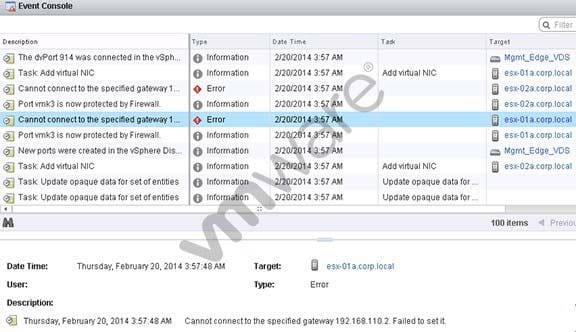
2V0-641 Exam Questions & Answers
Exam Code: 2V0-641
Exam Name: VMware Certified Professional 6 – Network Virtualization Beta Exam
Updated: Apr 20, 2024
Q&As: 110
At Passcerty.com, we pride ourselves on the comprehensive nature of our 2V0-641 exam dumps, designed meticulously to encompass all key topics and nuances you might encounter during the real examination. Regular updates are a cornerstone of our service, ensuring that our dedicated users always have their hands on the most recent and relevant Q&A dumps. Behind every meticulously curated question and answer lies the hard work of our seasoned team of experts, who bring years of experience and knowledge into crafting these premium materials. And while we are invested in offering top-notch content, we also believe in empowering our community. As a token of our commitment to your success, we're delighted to offer a substantial portion of our resources for free practice. We invite you to make the most of the following content, and wish you every success in your endeavors.

Download Free VMware 2V0-641 Demo
Experience Passcerty.com exam material in PDF version.
Simply submit your e-mail address below to get started with our PDF real exam demo of your VMware 2V0-641 exam.
![]() Instant download
Instant download
![]() Latest update demo according to real exam
Latest update demo according to real exam
* Our demo shows only a few questions from your selected exam for evaluating purposes
Free VMware 2V0-641 Dumps
Practice These Free Questions and Answers to Pass the VCP6-NV Exam
Which two statements are valid regarding vCloud Networking and Security (vCNS) and NSX? (Choose two.)
A. Both vCNS and NSX support multiple hypervisor environments.
B. NSX provides support for multiple hypervisor environments, vCNS does not.
C. Both vCNS and NSX support dynamic routing protocols.
D. NSX supports dynamic routing protocols, vCNS does not.
An administrator wishes to upgrade to NSX from the following infrastructurE.
vCenter Server 4.1
vShield 5.0
ESXi hosts 4.1
What is a valid, minimum set of steps to properly upgrade this environment to NSX?
A.
1. Upgrade vCenter Server 4.1 to vCenter Server 5.5
2.
Upgrade vShield 5.0 to vShield 5.5
3.
Upgrade ESXi hosts to ESXi 5.1 or greater
4.
Install the NSX upgrade bundle
B.
1. Upgrade vCenter Server 4.1 to vCenter Server 5.1
2.
Upgrade vCenter Server 5.1 to vCenter Server 5.5
3.
Upgrade ESXi hosts to ESXi 5.1 or greater
4.
Install the NSX upgrade bundle
C.
1. Upgrade vCenter Server 4.1 to vCenter Server 5.5
2.
Upgrade ESXi hosts to ESXi 5.1 or greater
3.
Install the NSX upgrade bundle
D.
1. Upgrade vCenter Server 4.1 to vCenter Server 5.5
2.
Upgrade vShield 5.0 to vShield 5.5
3.
Install the NSX upgrade bundle
Layer 2 Multipathing (L2MP) and Multi-chassis Etherchannel (MEC) features have distinct scaling differences with the network switching and routing services provided by NSX.
Which two statements provide a proper contrast of these services? (Choose two.)
A. Multi-chassis Etherchannel features provide higher utilization of Ethernet links within a defined L2/L3 distribution area.
B. Multi-Chassis Etherchannel features provide an easy ability to scale a VLAN across the data center.
C. NSX provides a method to transparently deploy L2MP protocols upon existing data center installations without service disruption.
D. NSX provides a method to deploy scalable L2/L3 services on existing data center installations.
Which two statements are true regarding NSX High Availability (HA)? (Choose two.)
A. NSX HA is configured as Active-Active.
B. NSX HA is configured as Active-Standby.
C. If an Active node fails, there is no service interruption during failover.
D. If an Active node fails, there is a 15 second service interruption during failover.
-- Exhibit -

-- Exhibit -An NSX administrator is examining an error in the Event Console as shown in the Exhibit.
Which condition would result in this error?
A. The configured MTU size on the physical network is too small.
B. The VTEP IP pool addresses are on the ESXi management network subnet.
C. VLANs are configured on the logical network.
D. A VXLAN segment ID pool is not configured.
Viewing Page 1 of 3 pages. Download PDF or Software version with 110 questions

